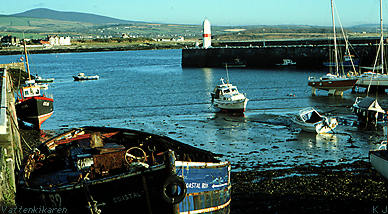 |
|
 A vital contributing factor to the low rate
of water exchange is the lack of any notable tidal
effect in the shallow bays along the Swedish coast. In the northern
areas of the Swedish west coast, the difference between high and low water
is about 30 cm, where as on the east coast of Sweden, it is only a few centimetres.
This is very little compared to, for example Britian, where in certain areas
the tidal difference can be up to 4-5 m on a daily basis and with such powerful
tides large quantities of water are transported in and out of shallow bays
and coves.
A vital contributing factor to the low rate
of water exchange is the lack of any notable tidal
effect in the shallow bays along the Swedish coast. In the northern
areas of the Swedish west coast, the difference between high and low water
is about 30 cm, where as on the east coast of Sweden, it is only a few centimetres.
This is very little compared to, for example Britian, where in certain areas
the tidal difference can be up to 4-5 m on a daily basis and with such powerful
tides large quantities of water are transported in and out of shallow bays
and coves.
Over-fertilization in the shallow bays around the Baltic
The effects of over-fertilization in the
Baltic are not really the same as along the Swedish west coast. This is
because the water in the Baltic has another composition. The salt content
varies greatly, from the almost freshwater in the far north of the Gulf
of Bothnia to a much higher salt content to the south in the Baltic, reaching
its maximum around The Belt in Denmark. Because of a well developed halocline,
saltwater from the Skagerakk (because of its density) has difficulty reaching
the shallow bays and coves during the summer months.
Because the shallow bays of the Baltic have a different water
exchange compared to the west coast, so also exists another situation with
the type and distribution of the Marine fauna. Generally, the Baltic has
fewer specie, but in larger numbers, while at the same time existing in
an environment that they can just about survive in. It is therefore maintained
that many of specie that exist in the brackish waters of the Baltic live
a fragile existance and cannot tolerate large environmental changes. Therefore,
the Baltic is a much more sensitive environment compared to other maritime
areas. The food chain is also very simple and therefore more prone to interference.
 |
Page
20 of 28 |
 |
|



